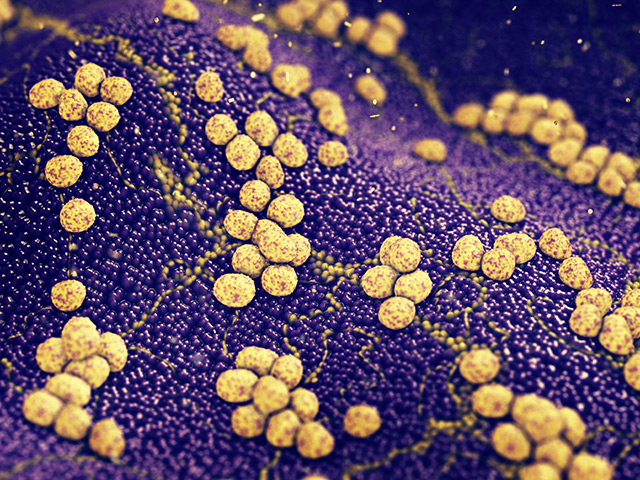Those fun ball pits your child likes to play in are probably a breeding ground for killer germs
09/10/2019 / By Edsel Cook

The next time you go to the pediatric clinic, it may be best not to let your child into the ball pit. A recent study warned that these physical therapy playgrounds were just as dirty and filled with disease-causing microbes as their counterparts in family restaurants.
Published in the American Journal of Infection Control (AJIC), the study warned that ball pits increased the likelihood of pathogens transferring between children.
Ball pits started booming in number during the 1980s. Big commercial restaurants installed them in branches across the nation to entertain the children of their customers. Other facilities followed suit.
Given the nature of their users and purpose, ball pits often end up with plenty of dirt, vomit, and body wastes. The contaminants create a welcoming environment for pathogenic microorganisms.
Many pediatric clinics feature nearly identical playgrounds. These ball pits see use in physical therapy sessions for children with motor or sensory problems. They help provide physical and sensory stimulation for the patients.
Researchers from the University of North Georgia (UNG) warned that clinics may take their sweet time sterilizing their ball pits – going days and even weeks between cleanings. Microorganisms like bacteria, fungi, and viruses would then take advantage of the long periods between cleaning sessions to gather together and increase their numbers.
Eventually, the population of pathogens would reach sufficient levels to cause bacterial and fungal infections in children. (Related: Green space makes you happy: A childhood spent in nature decreases risk of later depression.)

|
Discover how to prevent and reverse heart disease (and other cardio related events) with this free ebook: Written by popular Natural News writer Vicki Batt, this book includes everything you need to know about preventing heart disease, reversing hypertension, and nurturing your cardiac health without medication. Learn More. |
Ball pits in pediatric clinics are teeming with disease-causing bacteria and fungi
The UNG investigators visited pediatric clinics in the state of Georgia. They examined the ball pits in the facilities’ inpatient physical therapy or outpatient sections.
At every ball pit, they took nine to 15 samples at random from different depths of the pool. They evaluated each ball for the types and population levels of bacteria present on its surface.
Their findings showed that the samples from the tested ball pits hosted high concentrations of pathogenic microorganisms. The researchers counted eight strains of bacteria and one species of fungus. A single plastic ball might host a thriving colony of bacterial cells numbering in the thousands.
The results of the study indicated that ball pits increased the risk of transmitting the disease-causing microorganisms to patients who used them. In turn, that raised the possibility that the children would develop bacterial or fungal infections.
“We found considerable variation in the number of microorganisms between the different ball pit samples,” stated UNG leader researcher Mary Ellen Oesterle. “This suggests that clinics utilize different protocols for cleaning and maintenance, potentially representing a broader need to clarify and establish standards that reduce the risk of transmission.”
The pathogens in ball pits are waiting for the opportunity to infect your child
The UNG researchers identified a total of 31 bacterial strains and one species of yeast. A number of the bacteria and the lone fungus were opportunistic pathogens.
Normally, opportunistic pathogens don’t infect healthy hosts. But they become infectious and dangerous if the host had a compromised immune system – such as children with existing health problems.
The four most prominent human-related pathogenic bacteria found by the researchers were as follows:
- Enterococcus faecalis, known to cause endocarditis, meningitis, septicemia, and urinary tract infection.
- Staphylococcus hominis causes bloodstream infections. A 2005 study by Spanish researchers attributed sepsis cases in a neonatal intensive care unit to this strain.
- Streptococcus oralis causes adult respiratory distress syndrome (ARDS), endocarditis, and streptococcal shock.
- Acinetobacter lwofii is connected to septicemia, meningitis, and pneumonia. It also causes urinary tract infection and skin infections.
“Facilities should establish a program for regular cleaning to protect patients and healthcare workers from potential infection risks,” commented Karen Hoffmann, the President of the Association for Professionals in Infection Control and Epidemiology (APIC).
Sources include:
Tagged Under: bacteria, bacterial infections, ball pits, children's health, fungal infections, germs, immune system, infections, Microbes, pathogenic bacteria, pathogenic fungi, pathogens, pediatric health, physical therapy



















